One of the questions students frequently pose to me on site visits is, “Is The Walking Classroom going to make any math podcasts?” In reply, I throw a question back at them, “How do you learn math?” They ponder for a bit, and then I hear a chorus of “Oh . . .” – usually long and drawn out.
While The Walking Classroom’s podcasts provide lessons for a vast variety of topics in language arts, social studies, and science, none focuses directly on math. That is not to say that math can’t make its way into a podcast-based lesson; on the contrary, there’s always the opportunity to make room for math when addressing podcast topics!
Natural (Literally & Figuratively) Connections
Math-related topics do find their way into The Walking Classroom’s podcasts on occasion. From classification to money, you can pick podcasts that easily mix in math and, at the same time, make for some great cross-curricular connections!
Classification means arranging things into groups based on some common property. In math class, you might do that with shapes, sorting them by the number of sides, for example. In science class, you might do that with animals of all sizes, from beluga whales to beetles, an idea addressed in Animal Classification (4-#41, STEM-#32, Combined-#131). And it’s not just all animals, or a specific group like insects that you can classify! Plenty of sorting finds its way into science, as we can group rocks in earth science and elements in physical science!
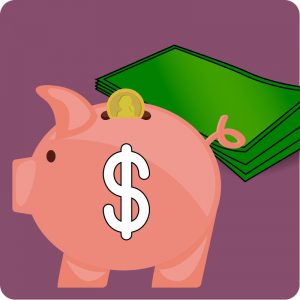 Money matters matter! Money (5-#95, Combined-#114) helps students understand the practical applications of math and the importance of budgeting. Bring concepts into real life by practicing money skills. Use a budget worksheet to guide your class through an allowance activity, or build a unit around managing money with a ready-made guide.
Money matters matter! Money (5-#95, Combined-#114) helps students understand the practical applications of math and the importance of budgeting. Bring concepts into real life by practicing money skills. Use a budget worksheet to guide your class through an allowance activity, or build a unit around managing money with a ready-made guide.
Mathematical Masters? Maybe!
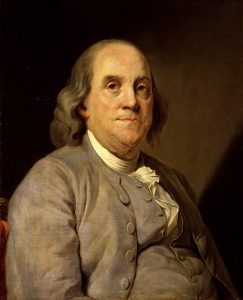 There are plenty of famous folks who put their math skills to practice! In fact, it is said that Benjamin Franklin (4-#47, Combined-#69) would entertain himself with the creation of magic squares, grids containing columns and rows of numbers that result in the same sum when added together. While Franklin worked with 8 by 8 and 16 by 16 grids, you can start your students off with smaller squares.
There are plenty of famous folks who put their math skills to practice! In fact, it is said that Benjamin Franklin (4-#47, Combined-#69) would entertain himself with the creation of magic squares, grids containing columns and rows of numbers that result in the same sum when added together. While Franklin worked with 8 by 8 and 16 by 16 grids, you can start your students off with smaller squares.
Several scientists throughout history were known for their math ability as well. Have a listen to the podcasts about these figures and see if your students can figure out the role of figures (numerical figures, that is!) in their work!
- Galileo Galilei (5-#24, STEM-#5, Combined-#165)
- Benjamin Banneker (5-#28, STEM-#7, Combined-#153)
- Albert Einstein (5-#17, STEM-#10, Combined-#163)
Playing with Patterns in Poetry
Interestingly, many math concepts center around patterns. You can notice patterns in skip counting and in multiplication tables, and in tessellations (the repeating of shapes over and over to cover a surface) in geometry too!
Patterns are all around us, both in things we see and in things we hear. It is those sound patterns that we recognize in the rhyme scheme and meter in a poem! Dive into a study of these facets of poetry and learn about a poet or two. After all, National Poetry Month (April) is just around the corner!
- Rhyme Scheme, Meter, and Verse (4-#9, Combined-#9)
- Ogden Nash (4-#40, Combined-#36)
- Emily Dickinson (4-#38, Combined-#28)
Begin with some basic rhymes, then dig deeper with the help of a variety of lesson plan ideas. Actively experience rhythm (or meter), clapping it out as you read poems aloud. In no time, even younger students will notice a pattern of accented and unaccented syllables! Once you’ve explored these features of poetry, see them in action in the work of Emily Dickinson, the whimsical writings of Ogden Nash, and other poets.
Math at Work
And math connections can be found in other podcasts too!
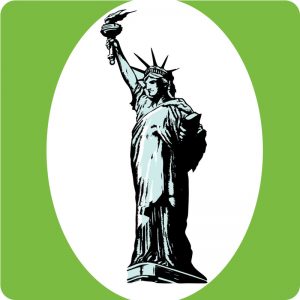 Have your students put their math skills to practice solving word problems about the Statue of Liberty (5-#65, Combined-#75), or make measurement your focus to get a perspective on the monument’s size. You can also mix in some math as you explore Sun, Stars and Galaxies (4-#78, STEM-#26, Combined-#144). Use measurement and hands-on math to make a scale model of the solar system.
Have your students put their math skills to practice solving word problems about the Statue of Liberty (5-#65, Combined-#75), or make measurement your focus to get a perspective on the monument’s size. You can also mix in some math as you explore Sun, Stars and Galaxies (4-#78, STEM-#26, Combined-#144). Use measurement and hands-on math to make a scale model of the solar system.
Even those health literacy lessons can create a math connection. Note the mileage you cover or steps you take each time your class walks, listens, and learns. Then, use that data to get in some graphing practice. There are so many ways to make room for math!


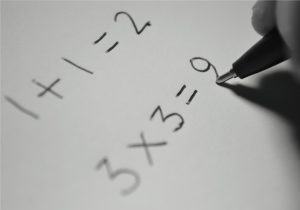
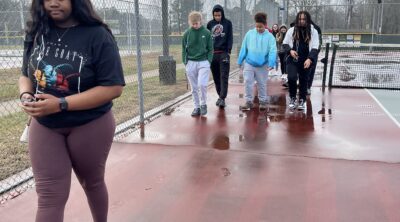
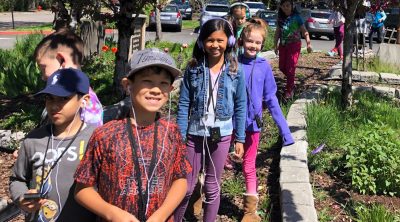
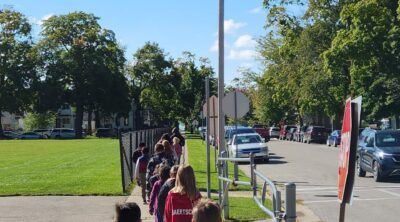
I just had a teacher ask if there were any good podcasts for math. I decided to search the blog and came across this! Perfect. I hadn’t even thought of the ones about scientists. Thank you!
Thank you for sharing these insights! The Walking Classroom has been a great way to support my students in science, ELA, and social studies and I had wondered if there would be any math lessons in the future. These tips are a great way to add some cross-curricular learning into our day!